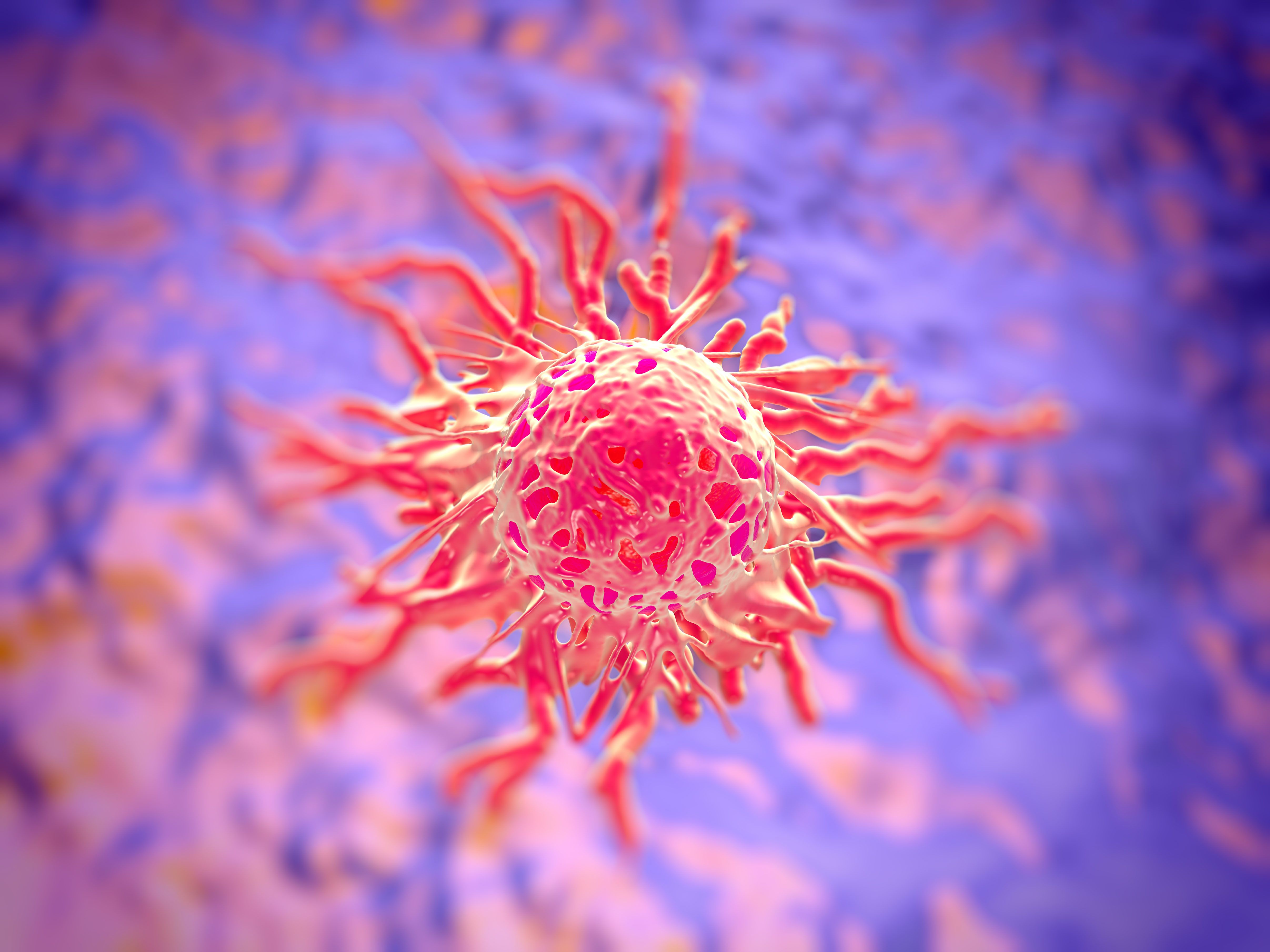Surprising Findings in Intratumor Heterogeneity Could Impact Cancer Treatment
A new study has analyzed intratumoral heterogeneity (ITH) in 12 cancer types and found a "tolerable" level of genomic instability, independent of cancer type, beyond which a cancer may become less aggressive.

A new study has analyzed intratumoral heterogeneity (ITH) in 12 cancer types and found a “tolerable” level of genomic instability, independent of cancer type, beyond which a cancer may become less aggressive.1
The authors of the study, published online inNature Medicine, suggest that patients identified with intermediate levels of this instability may benefit from chemotherapies and radiotherapies that may push the genomic instability of the tumor beyond this “tolerable” level. The results suggest genomic instability and ITH may be effective indices that can be used to assess all cancers.1
Genome sequencing data from a tumor sample should be regarded as a tumor metagenome, due to the sample representing the total sum of genomes in the tumor. Within a tumor, heterogeneity exists such that it will contain a range of clones of different genetic characteristics. Natural selection acting on these subpopulations accounts for the evolution of the tumor and can result, among other consequences, in therapeutic resistance. Using a state-of-the art mixture-separation algorithms the researchers quantified the incidence of mutations and ITH.1
Analysis of Data
The authors utilized The Cancer Genome Atlas to analyze 1165 tumor samples from 12 cancer types. They used exome sequencing data from pairs of tumor-normal samples from a single center to ensure data quality. They used two mixture-separation algorithms, namely, expanding ploidy and allele frequency on nested populations (EXPAND) and PyClone, to detect clones occurring at frequencies greater than 10%.
Tumors analyzed in the study include thyroid, prostate, kidney, low-grade glioma, glioblastoma, head and neck, cervical, stomach, lung (adenocarcinoma), lung (squamous), and melanoma.1
The wealth of data gave them a measure of intratumoral heterogeneity for each tumor. Analyzing whole slide images of hematoxylin and eosin-stained tumor samples (available for 80% of the tumors they selected) they were able to quantify ITH by assessing differences in nuclear size and density of staining. For this step the team used image analysis software, validated by an independent histopathologist using blinded methodology. To evaluate the prognostic value of genomic instability and genetic ITH, survival data were obtained. Due to a lack of suitable data, prostate adenocarcinoma and thyroid carcinoma were excluded from cancer type-specific analyses.1
Findings
The two techniques, EXPANDS and PyClone, found that the existence of tumors containing only one genetically homogeneous cell population was rare at 14% and 20%, respectively. Even for the thyroid samples, >50% were predicted to harbor 2 or more clones. This was considered evidence that genetic ITH is present in the majority of the 12 cancers they studied.1
Mutations in driver genes in the smallest clones (lowest 5% of clones) were associated with poorer survival (HR = 2.15, 95% CI, 1.71-2.69). When more than 2 clones were present in a tumor sample, versus samples containing only 1 or 2 clones, survival was also negatively impacted (HR = 1.49, 95% CI:1.20-1.87). However, this relationship between ITH and survival was nonlinear. An increase in clone number >4 did not increase the risk, and there was a reduced risk associated with >4 in highly diverse tumors. It was not significant on univariate analysis, but was when multivariate analysis was used. This nonlinear relationship was also found when nuclear diversity, as evaluated histologically, was used as a measure of ITH. Specifically, the correlation between ITH in the morphology of the nuclei and genetic ITH was significant (Spearman’s correlation coefficient,P= 0.24-0.41;P<.001).1
The number of copy number variants (CNVs) in a tumor metagenome is an indicator of genomic instability. The authors further found that across cancer types, improved survival resulted when either a very low or a very high fraction of the metagenome was affected by CNVs (P= 5 x 10-6, HR = 0.15; log rank test). An intermediate fraction of CNV abundance was associated with poorer survival. Using two independent data sets they showed that when CNVs affected either <25% or >75% of a tumor genome, there was a reduced risk of mortality (HR = 0.15, 95% CI: 0.08-0.29). Indeed, a CNV abundance of 50%-75% identified the highest risk group among patients with six of the cancers included in the study. There appears to be an optimal level of genomic instability and it is independent of tumor type.1
Implications for Patients
The authors state the results suggest that patients with intermediate levels of CNVs will benefit from adjuvant chemotherapy and radiotherapy, pushing the CNV abundance over the 75% precipice, and leading to reduced cancer cell viability and improved patient survival. They also point out the finding that genetic ITH correlates with histopathologic ITH.1However, in an interview inNew Scientist, senior author Carlo C. Maley, PhD, director, Center for Evolution and Cancer, UCSF; associate professor, Surgery UCSF and associate professor, School of Life Sciences, Arizona State University, said “Nucleus size isn’t ready to be used as a test yet, but should be developed further.”2
In terms of new therapeutic ideas, the authors highlight the risk for tumors as they evolve, between acquiring a successful mutation that permits further clonal expansion, or producing daughter cells with high mortality. They suggest that approaches targeting this trade-off may improve outcomes in light of their finding of the synchronous increase in ITH and CNV burden.1
References
- Andor N, Graham TA, Jansen M, et al. Pan-cancer analysis of the extent and consequences of intratumor heterogeneity.Nat Med. 2015 Nov 30. doi: 10.1038/nm.3984. [Epub ahead of print]
- New Scientist. Cancer’s genetic tipping point reveals who’d benefit from chemohttps://www.newscientist.com/article/dn28579-cancers-genetic-tipping-point-reveals-whod-benefit-from-chemo/. Accessed December 18, 2015.